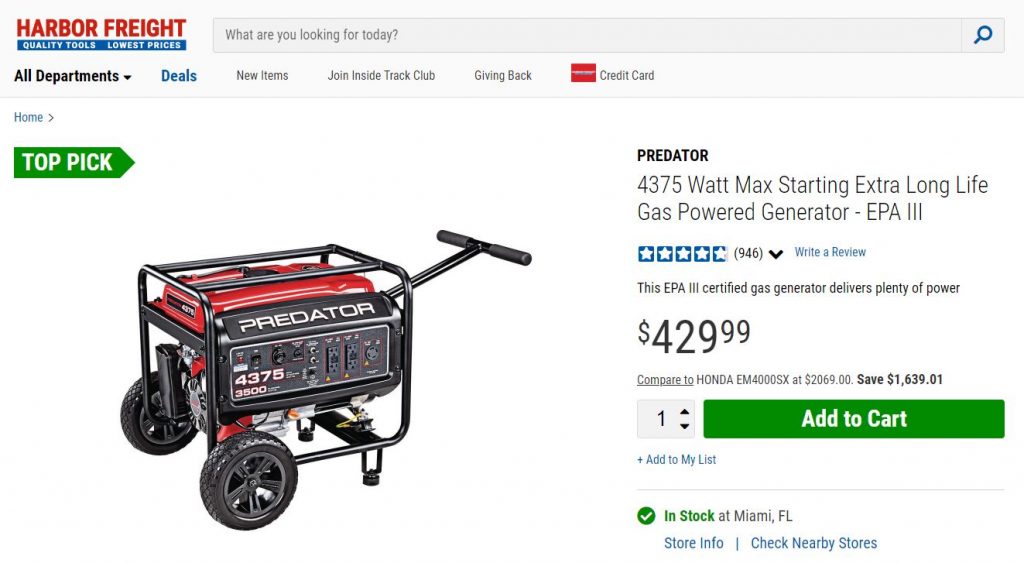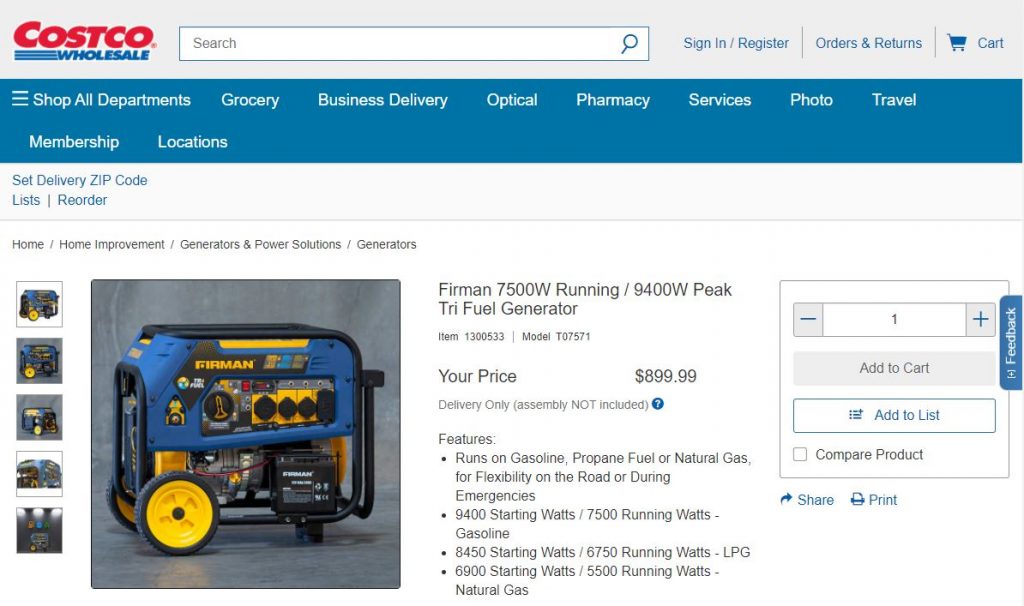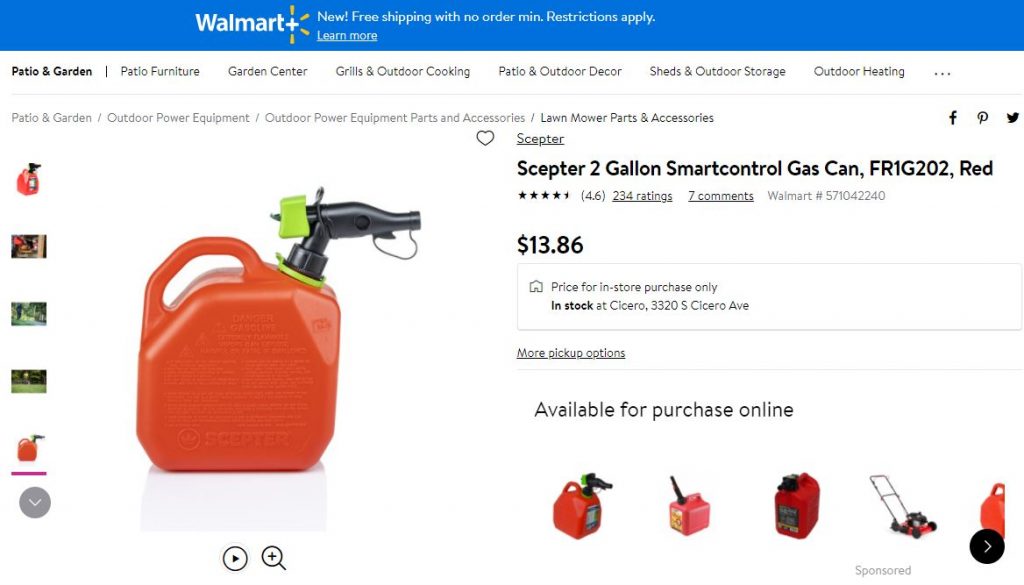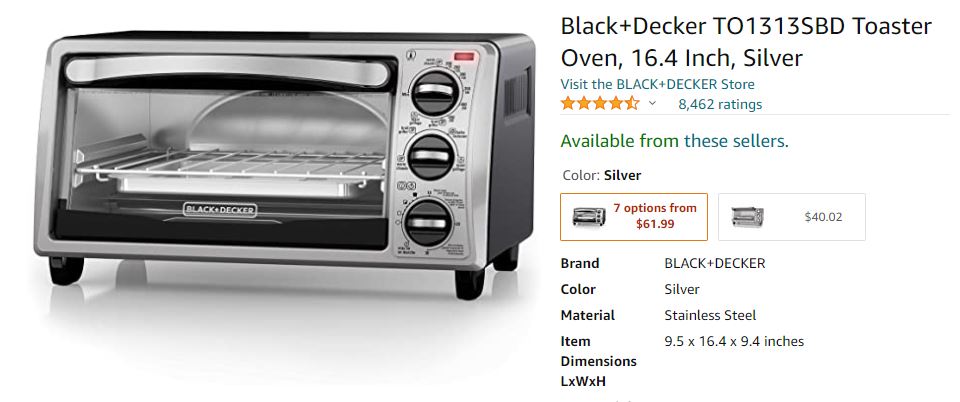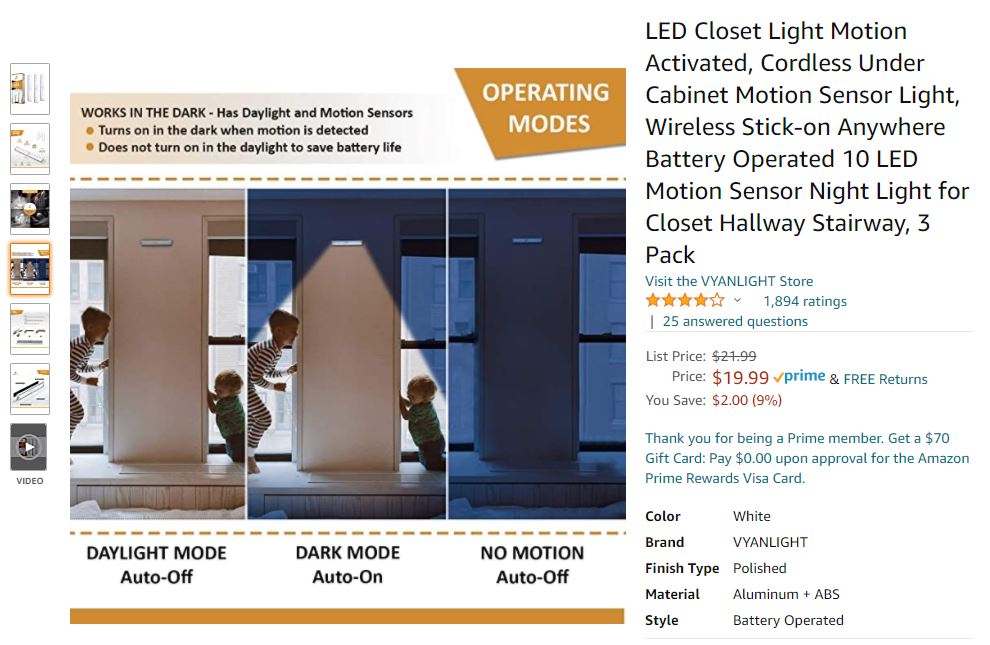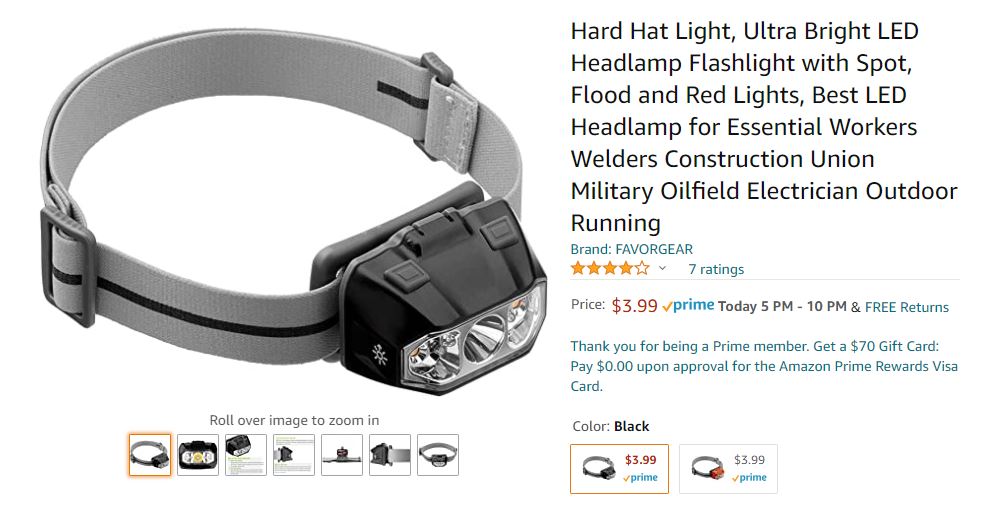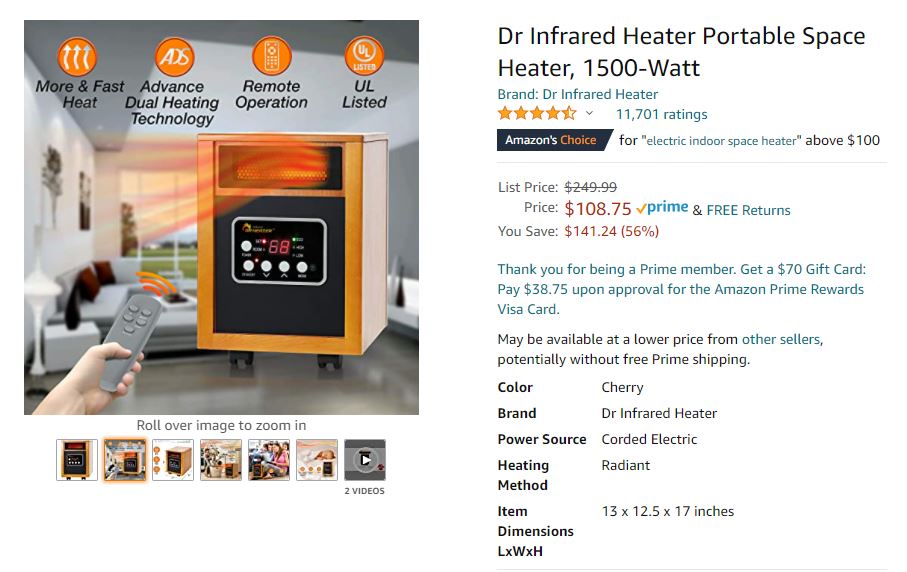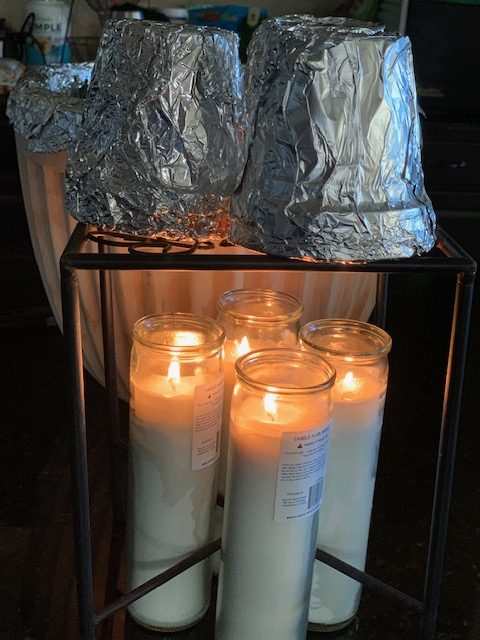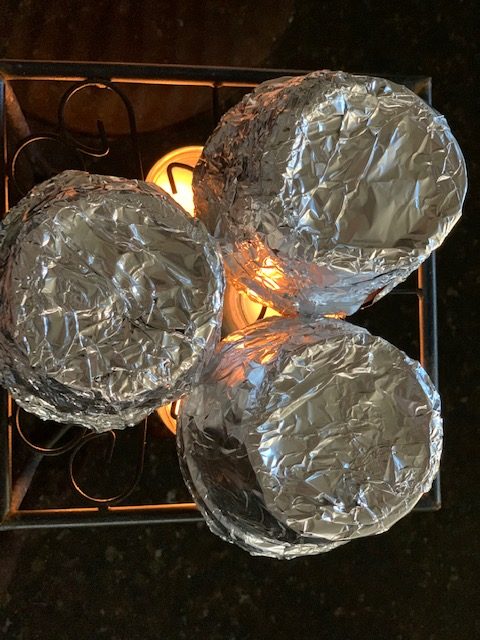As you may already be aware, last week, Texas experienced a “bad snowstorm” that knocked out our power grid for much of the state. I put “bad snowstorm” in quotes, because having grown up in Massachusetts, the amount of snow we got here (less than 4 inches) would be considered a laughable snow flurry at best by those who live up north. Trust me, I get it.

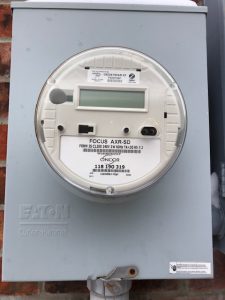 The difference here however is, that such a thing is extremely rare and we have nowhere near the required infrastructure to handle it. We don’t have city salt trucks and snow plows, etc. to clear and maintain the streets and the vast majority of Texans have zero experience driving in such conditions (unless, like me, they came here from elsewhere). In short, it’s the sort of thing that can and did cause a lot of problems. These problems were of course significantly compounded by our electricity going out. I’m not going to get into why that happened here. Rather, the goal of this post is to simply explain how we survived not having electricity for nearly 6 days, in freezing temperatures.
The difference here however is, that such a thing is extremely rare and we have nowhere near the required infrastructure to handle it. We don’t have city salt trucks and snow plows, etc. to clear and maintain the streets and the vast majority of Texans have zero experience driving in such conditions (unless, like me, they came here from elsewhere). In short, it’s the sort of thing that can and did cause a lot of problems. These problems were of course significantly compounded by our electricity going out. I’m not going to get into why that happened here. Rather, the goal of this post is to simply explain how we survived not having electricity for nearly 6 days, in freezing temperatures.
Now, I’m not going to claim we did everything right. I’m simply sharing our experience here and telling you what we did. I will also include links to the things we bought so you can get them yourself if you so desire. Simply click on the pics to go to the websites.
First, I must give credit where credit is due. I truly believe the Holy Spirit was out and about well in advance prompting people to prepare for something. I had a strong sense that I needed to buy a generator about 3 weeks before the storm hit. After mentioning that on Facebook, several others testified to the same thing. For some reason several of my friends felt the same prompting and I can say for certain, we are all very happy we obeyed. I actually bought two generators. One for emergencies and the second because my wife and her sister were doing work on a house their mother rents out, which was currently not occupied and therefore without an electricity contract. I got this one for them to use there:
Right about the time I got this one, I received a few donation checks in the mail. In this regard, THANK YOU to all who support our ministry. As full time content producers, who put everything we do online for free, we rely 100% on our audience for support. And very often, that support comes in at the perfect time when we need it (thank you YHWH)! It is not an understatement to say, we can’t do what we do without you. And this was certainly the case last week. With the additional funds, I went to Costco and bought this one for our home emergency use:
And the day I went, it just so happened to be on sale for $100 less! This generator was a huge part of how we survived last week. After we realized it had been 12 hours and our electricity wasn’t coming back on (even though it did for many of our neighbors), I figured it was time to unbox this thing and get it running before nightfall (as the temperature was dropping to below freezing).
Sheila’s sister lives just down the street from us and although their electricity was coming on for a few hours a day, it wasn’t enough to save their tropical fish. So, we gave them the Predator generator to supplement during their outages.
After the first night of running lots of stuff, and then having to refill the generator, I realized the more the load, the shorter the time it lasted. I soon found that if we budgeted our usage well – powering primarily one space heater and some lights in just one 12 x 15 room instead of tackling the whole house – the generator could last about 14 hours on a single (8 gallon) tank of gas. That’s definitely a blessing, because it’s no fun having to wake up at 4AM to go outside in the freezing cold to refill and then try to get back to sleep, while waiting for the room to heat back up again.
Less is best. Crammed into one room, and only using as much electricity as we needed, this generator definitely kept us cozy through some very cold nights – when the rest of the house was an icebox. As you can see in the description above, the generator can also use propane and natural gas, though I never did try it with either. Needless to say, it was SO worth the $800 – trust me, it’s worth every penny in a situation like we had here all last week. Home Depot had a similar one (different brand) that was not multi-fuel, for about $750. These things are life savers – literally. So if you don’t have one, you might seriously consider getting one. You’ll be so glad you did if you find yourself in a similar situation.
Now let’s talk gas cans. This generator has an 8 gallon tank. So, I thought, “OK. I’ll get some 5 gallon gas tanks.” I bought one at the local gas station, but man, it was no fun to fill. It had a filter insert (which couldn’t be easily removed) and as soon as the pump started, it would splash gasoline back out. It couldn’t handle the pressure. So, you either had to find a pump that wasn’t so powerful, or pump and release quickly over and over again (which took forever), or try really hard not to squeeze the handle too hard (when your hands are freezing), such that it would trickle out (which also took forever). None of that was any fun in the freezing cold. Even worse if you ended up getting gas on your boots or pants – which can be very dangerous when it seemed like every move you made set off static sparks. After dealing with that headache a couple of times, I found a much better, smaller can at Walmart:
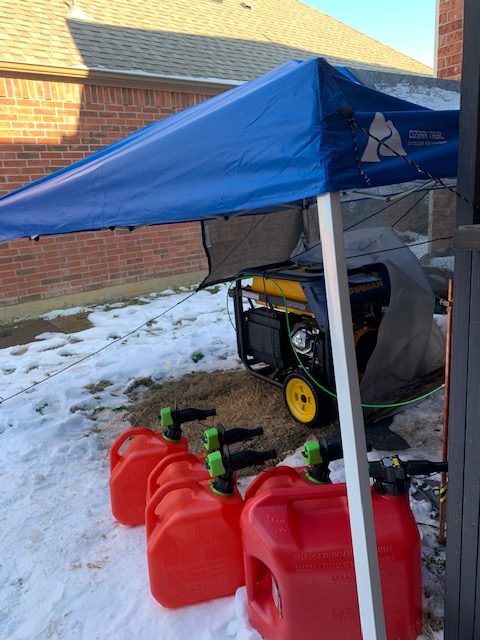 Whoever designed this baby deserves an award! It filled easily and was very safe to use when pouring. So, I ended up just getting 4 of these, which was much easier to manage than the larger cans.
Whoever designed this baby deserves an award! It filled easily and was very safe to use when pouring. So, I ended up just getting 4 of these, which was much easier to manage than the larger cans.
Of course, you can’t run a generator inside, and ideally, you should park it about 20 feet away from your home. We didn’t have that much space, but I could put it about half that distance between both our house and our neighbor’s. The problem is, that left the generator out in the elements. So, I put a canopy tent over it and rigged up the side where the electrical connectors were so that no snow or rain could get on it. This proved very helpful when on the second night it snowed pretty hard again.
The generator is rather loud (about like a typical gas powered lawn mower), so the best, most practical location was just outside our sliding doors, which lead into the kitchen. I ran two long extension cords – one to run kitchen stuff as needed, and the other going to our 12 x 15 guest bedroom (which was smaller than our master bedroom, so it was easier to heat up). The cords of course prevented the sliding doors from completely closing. So, I grabbed a roll of painter’s plastic and duct taped it over the open crack so that no carbon monoxide would get into the house.
In that regard, we also bought some carbon monoxide detectors and strategically placed them near the sliding door and near our room to be sure we didn’t inadvertently kill ourselves. These worked great and gave us added peace of mind:
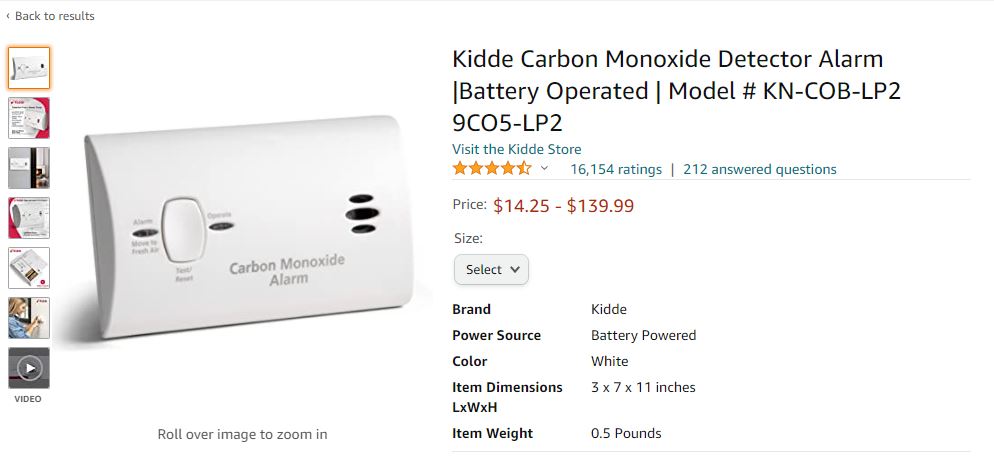 Before we lost power, we were aware of the coming storm, so drawing on my experiences when I lived up north, I immediately filled our bathtub with water, just in case we lost water pressure. I also got every faucet dripping to protect against freezing pipes. Good thing we did. Our neighbor didn’t and their’s burst, requiring the city to come in and shut the supply off at the street on day 3. I also bought a good supply of bottled water just in case. Fortunately, we never lost our water supply, but we were well prepared in case we did.
Before we lost power, we were aware of the coming storm, so drawing on my experiences when I lived up north, I immediately filled our bathtub with water, just in case we lost water pressure. I also got every faucet dripping to protect against freezing pipes. Good thing we did. Our neighbor didn’t and their’s burst, requiring the city to come in and shut the supply off at the street on day 3. I also bought a good supply of bottled water just in case. Fortunately, we never lost our water supply, but we were well prepared in case we did.
I used a hot water kettle to heat my water for washing up as needed:
 Note: these things use a thousand watts. This was important to know when considering what should run from which outlet on the generator and how much to run off a single extension cord. Same with the toaster oven, which is what we used to cook everything:
Note: these things use a thousand watts. This was important to know when considering what should run from which outlet on the generator and how much to run off a single extension cord. Same with the toaster oven, which is what we used to cook everything:
We take much for granted when electricity is running into our homes. But when you have a space heater, a toaster oven, some lights and a water heater kettle going… yeah, you can pop a fuse. Not a big deal, but it’s not pleasant having to go back outside into the cold to reset it. As stated above, this particular generator can run 7500 watts easily enough, but you’d be surprised how much of that can get used with electric space heaters and other appliances. The generator had both 20 amp and 30 amp outlets, so we quickly started reading labels, plugging things into appropriate outlets and budgeting power accordingly.
Once we figured all of that out, we got into a pretty easily managed routine. And part of what made it so easy for us to adapt was in the fact that (in addition to having been a Boy Scout and serving in the Army myself), Sheila and I have been doing Sukkot for ten years, which means we’ve figured out how to “rough it”… in style. 🙂 For instance, Sheila was fond of having these motion detection LED light strips:
I must say, I got spoiled with these things. They are very cool to have! Even with the electricity back on in the house, I like these better. You enter a room and they come on. After no movement is sensed for about 30 seconds, they shut off. It’s like having a robo-house catering to you. Pretty cool and definitely useful for getting around in the dark when there is no electricity. And when moving about the rest of the house or going outside to work on the generator, this is a very handy thing to have as well:
The space heater we had in the bedroom was nice because the temperature could be set to whatever you wanted. We found it best to set it to 75, but it never actually got that warm… until we realized how much cold was creeping in under the door. Once we put down some towels, it helped to seal the heat in a lot better and we were able to maintain about 70 degrees throughout the night. This heater was actually another blessing for us. Sheila’s mom had these for the apartment she was renting out, but since no one was in that apartment, Sheila had brought this one home just days before the storm hit.
When it came to food, we were already pretty stocked up from a recent grocery store run when the storm hit. But when I started working out again, I signed up with Trifecta to have a vegetarian meal plan and I have 10 meals delivered to our door every week so we had plenty of food. These are great. They come already cooked and pre-packed with exact nutritional values easy to track. I’ve been with them for about a year now and I’ve been very happy with the food and their service. It’s all non-GMO, organic and fully customizable. They have 5 different style premade meal plans (Clean, Paleo, Keto, Vegan and Vegetarian) or you can do it a la carte to get exactly what you want. If interested in checking it out for yourself, please click on the pic below (which is my affiliate link):
These were great in this situation because, they were healthy meals, that only required being heated up for a few minutes in the toaster oven. Side note: perhaps one of the few good things about losing power in freezing conditions is your food doesn’t go bad. Even though the refrigerator lost power, the whole house was an icebox! LOL! And we could put our food outside in containers to stay frozen easily enough too.
We were all set for food, but our son was not. And the roads were really bad – especially for someone with a small car, not experienced in driving in such conditions, surrounded by others who are not either. Fortunately, I had purchased several emergency food supply kits months prior. So he and his girlfriend were able to live on those for several days. When it comes to emergency food and other supplies (like water filtration units, camping, first aid and other survival gear, I highly recommend My Patriot Supply. That’s who I use, and have for years. If you’d like to get prepared for the future yourself, please click on the pic below (also an affiliate link):
If this event showed us anything it is that we were in fact, quite well prepared… but so few others were. So, let this be a word to the wise. Prep as much as you can because you never know what can happen in the days ahead. Now, having said that, I realize not everyone is financially ready to make all these investments. Trust me, I get it. We weren’t either. Aside from the Divine Providence that enabled us to get the generators, everything else was bought a little at a time over a long period of time. Next time you go grocery shopping, just buy a couple of extra cans of tuna or soup or rice, a package of bottled water, etc. and put it in storage someplace. If you can only afford to get on 30 day supply of emergency food a month, a quarter, a year or whatever, do it. Just start now and do what you can when you can. A year later, you will be surprised at how prepared you can become. The point is, you don’t have to do it all at once if you aren’t in the financial position to do so. It can become overwhelming. Just do a little bit here and a little there. You will be glad you did!
Other things you can do in a cold weather situation such as this is cover your windows. Many homes don’t have weatherized windows and heat or cold can easily get in that way. Sheila hung blankets over all our windows to keep cold drafts at a minimum:
Make sure you have some good boots and dress in layers… and thermal underwear is a must have! So, even without electricity you can bundle up and stay warm with layered clothing, blankets, sleeping bags, etc..
Now others posted cool ideas like this on Facebook for creating “life hack” heaters:
These are actually pretty neat and they DO work. I created one myself:
The candles heated up the inside pots and the tin-foil helped to create a convection oven, which put out some good heat through the top hole. You can do it without the tin-foil, but it gets much hotter with it. The only problem (for me) was that I can’t be around candles for long periods of time or I get a really bad headache. So, this didn’t work out for us because of that. But I will say, it put out some pretty good heat and may prove to be helpful for others. Just take obvious precautions when dealing with fire in the house, tent, etc..
And finally, there’s the Rocket Stove, created by my friend David Gordon. This thing is really quite an amazing invention. We didn’t end up needing to use it for cooking but it is great to have for camping or emergencies:
Here’s a video of David showing us how it worked at a meetup last year:
It creates a “fire vortex” and you can cook on the grill up top, on the hotplate below or in the oven beneath. Very cool (but hot)! 🙂 You can get one from him directly: https://gordonrocketcompany.com/ If you do, please tell him you heard about it from me and this blog.
A friend also sent this link to me, which you may find helpful in terms of prepping and survival:
http://www.survival-spot.com/survival-blog/argentina-collapse/
OK. That’s about all I can think of for now. Perhaps I’ll add more to it as other things occur to me that I may have forgotten to mention, but there should definitely be enough here to help you prepare for uncertain times ahead.
Blessings.
- Rob Skiba

